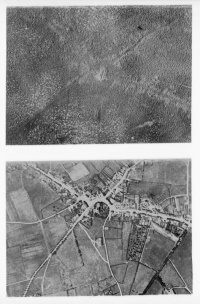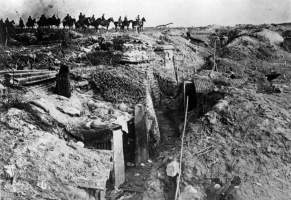Introduction↑
The word attrition is synonymous with the First World War on the Western and Italian fronts, and the term is often used when accusing generals of lacking imagination and simply throwing soldiers at their opponents in the hope that greater numbers would provide victory. This argument implies that attrition in warfare can somehow be avoided. Unfortunately, attrition is a key approach to winning any war as a combatant typically wins when their enemy has been worn down to the point of physical collapse, when their enemy’s morale (will to fight) has been eroded to such an extent that they are unwilling to further sustain the war, or through some combination of both. To achieve this effect it is necessary to destroy or to continuously damage the enemy’s forces and morale, and this typically involves heavy fighting. Ideally, an army uses maneuver to position itself to its advantage so that when a fight occurs the attrition is one sided and the enemy suffers disproportionately greater losses of men and materiel. Attrition, however, is often necessary in order to create the space required to maneuver in the first place. Thus, the two approaches to war fighting are closely inter-linked, with attrition being, in many ways, the more important of the two.
Why Attrition?↑
The problem of the First World War was that the stalemate caused by the developments of trench warfare meant that maneuvering to gain advantage was incredibly difficult if not impossible for much of the conflict even with extensive attritional preparation. Thus, advantage could only be gained by an attacker (before the development of effective tanks, aircraft, and the means to coordinate them with artillery and infantry) massing greater quantities of artillery and manpower at a place where the enemy had to fight and where they could not mass similar amounts of manpower and materiel. Ideally, this would allow an attacker to grind down the morale, equipment, manpower, and supplies of an enemy faster than they could do in response and this would bring their defeat, or failing that, a local collapse of the enemy’s army that might create a breakthrough and allow maneuver warfare to resume and a decision to be sought more easily.
Consequences↑
What this meant in practice was a strategy where a battle or campaign was focused on providing an army with sufficiently vast quantities of soldiers, artillery, shells, planes, gas, etc. that they could outfight and outlast their opponent. The widespread use of trenches provided a great deal of protection for soldiers, and this meant that great quantities of very heavy shells were required to kill them. Firing all of these shells required large numbers of artillery, their artillerymen, and the supplies to sustain all of it. Given the enormous difficulty of moving even small numbers of such heavy guns and shells in ideal conditions, let alone those of a destroyed trench landscape, battles tended to be relatively static and to occur near key railway facilities: for it was only at such a place that the great quantities of manpower and materiel necessary to fight could be amassed. As these places were fixed, it meant that an enemy could relatively easily predict where large attacks would happen and counter any buildup of materiel and manpower with a buildup of their own. Thus, attacks, particularly on the Western and Italian Fronts, for much of the period from 1915-1917, took the form of long grinding offensives where the enemy’s men, supplies, equipment, and morale were slowly worn down and their ability to replace their losses of men or materiel was eventually used up. Over time, and with sufficient advantage in manpower, equipment, supplies and morale it was possible for the attacker to inflict more damage on the enemy than the enemy could sustain even if the attacking side’s losses might be heavier. In practice this meant that the Entente Powers possessed a distinct advantage as they outnumbered the Central Powers in men, resources, and industrial capacity and as such only a decisive blow might win the war for Germany.
The German offensives during the spring of 1918 should be thought of with the above in mind. Germany tried to break the deadlock of trench warfare because it was losing the attritional war. The supreme irony is that despite the great distances covered, and the large amounts of territory captured, it was the enormous attrition suffered by Germany during these offensives that contributed directly to the collapse of the army in August of 1918.
Nicholas Murray, U.S. Naval War College
Section Editor: Emmanuelle Cronier
Selected Bibliography
- Foley, Robert: German strategy and the path to Verdun. Erich von Falkenhayn and the development of attrition, 1870-1916, Cambridge; New York 2005: Cambridge University Press.
- Krause, Jonathan: Early trench tactics in the French Army. The Second Battle of Artois, May-June 1915, Farnham 2013: Ashgate.
- Malkasian, Carter: A history of modern wars of attrition, Westport 2002: Praeger.
- Murray, Nicholas: The rocky road to the Great War. The evolution of trench warfare to 1914, Washington, D.C. 2013: Potomac Books.
- Philpott, William: War of attrition. Fighting the First World War, New York 2014: The Overlook Press.
- Travers, Timothy: The killing ground. The British Army, the Western Front, and the emergence of modern warfare, 1900-1918, London; Boston 1987: Allen & Unwin.









